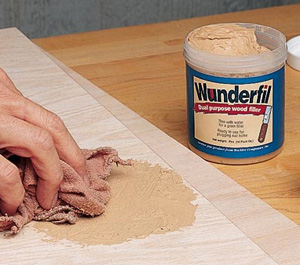
I’m painting a good quality maple tabletop with oil-based black enamel. Originally, I attempted to paint it with a spray can, but could not get a smooth surface. I then tried sanding it down smooth with increasing grits of wet/dry sandpaper, and then brushing on the same type of paint. While the brush marks are less noticeable than the result with the spray can, it is still not as smooth as I would like it to be. What can I do to achieve the smooth result I’m looking for? Could I achieve a smooth coat with clear enamel, and would the underlying brush marks disappear? – Rodger
Tim Inman: Fine furniture and piano finishes which are “glass-smooth” are not accidental! They are the creation of the finisher, as a result of very carefully planned steps, executed patiently and in order. To get that smooth surface you’re seeking, the wood surface must first be made as smooth as the finish you desire. This is typically done, in the case of a painted surface, by first sealing the wood with something convenient like shellac, then packing the wood pores with a high-solids filler. You can learn how the old masters did this on painted surfaces by studying carriage finishes. They are glass-smooth, painted surfaces. Often, carriage finishers used plaster of paris for their pore filler. Furniture finishers have some more elegant materials to pick from, but the principle is the same. First, you must seal and “load” the wood pores with something solid. Once that is accomplished — and sanded glass-smooth — you can again seal the surface and proceed. A paint primer which sands easily would be a great sealer to use. You’ll find that, actually, the final paint coats are the easiest and least critical parts of this whole job.
Trying to paint something smooth is commonly attempted, and never successful. Think about it this way: If you had a piece of corrugated sheet metal, and tried to paint it to a smooth flat surface, would you ever get it done? No. Why? Each successive coat of paint simply copies the undulating corrugations and builds them a little higher. After the Nth coat of paint, you would still have a corrugated surface mirroring the original tin, bu with inches of thick paint on top of it, to boot! Smooth flat surfaces can be had by “coating and cutting” where you build several coats, then sand off the high spots. This requires repeated attempts, and is usually unsuccessful. Better to just do it right the first time.
I cover filling and building smooth surfaces in my book, The Art of Classical Furniture Finishing.





